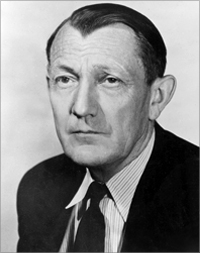Charles Christian Lauritsen
| Charles Christian Lauritsen | |
|---|---|

Charles Lauritsen (Photo Credit: AIP Emilio Segrè Visual Archives, Physics Today Collection)
|
|
| Born | 4 April 1892 Holstebro, Denmark |
| Died | 13 April 1968 (aged 76) |
| Fields | Physics |
| Institutions | Caltech |
| Alma mater |
Odense Tekniske Skole Caltech |
| Doctoral advisor | Robert A. Millikan |
| Doctoral students |
H. Richard Crane William A. Fowler Ralph W. Kavanagh |
| Known for | X-ray therapy, nuclear physics |
Charles Christian Lauritsen (April 4, 1892 – April 13, 1968) was a Danish-born American physicist.
Lauritsen was born in Holstebro, Denmark and studied architecture at the Odense Tekniske Skole, graduating in 1911. In 1916 he emigrated to the United States with his wife Sigrid Henriksen and son Tommy, first to Florida, where the family lived for a time on a houseboat, and later to Boston, where he worked as a draftsman during the Great War and was a witness to the Boston Molasses Disaster. By 1921 he was working in Palo Alto on radio for communicating between ship and shore. He became interested in the design of radio receivers, and for a few months in 1922 was in business with two partners building radios. By 1923 he had moved to St. Louis where he was chief engineer at the Kennedy Corporation, a producer of consumer radio receivers.
In 1926 Lauritsen attended a public lecture by Robert Millikan who, in casual conversation afterwards, invited him to visit Caltech. Lauritsen and his family soon moved to Pasadena where he talked his way into graduate study in physics. In 1929 he received his Ph.D., and in 1930 he joined the physics department faculty. He spent the remainder of his academic career as Professor of Physics at this institution, finally retiring in 1962.
In 1928 he and Ralph D. Bennett developed X-ray tubes of exceptionally high voltage. These tubes were then used for radiation therapy of cancer patients in the Kellogg Radiation Laboratory, built as a treatment clinic in 1931. Sigrid Lauritsen, who was one of the first female graduates of the University of Southern California medical school, worked in the clinic as a radiologist. In 1932 Lauritsen converted one of his X-ray tubes into an accelerator of protons and helium ions and began to study nuclear reactions. In 1934, Lauritsen and H. Richard Crane used a sample of recently discovered deuterium, obtained from G.N. Lewis at Berkeley, to generate neutrons with which they made the first accelerator-produced artificial radioactivity. He later measured the radiation produced when a positron and an electron annihilate each other. One of his most significant discoveries was to show that protons could be captured by a carbon nucleus, releasing gamma rays. This radiative capture process was applied to the study of the nuclear processes at the heart of a star, and the production of the heavier elements. In 1939 the laboratory ceased to do medical therapy and concentrated on nuclear physics. (Lauritsen was director of the laboratory from its inception until he retired in 1962.)
...
Wikipedia
